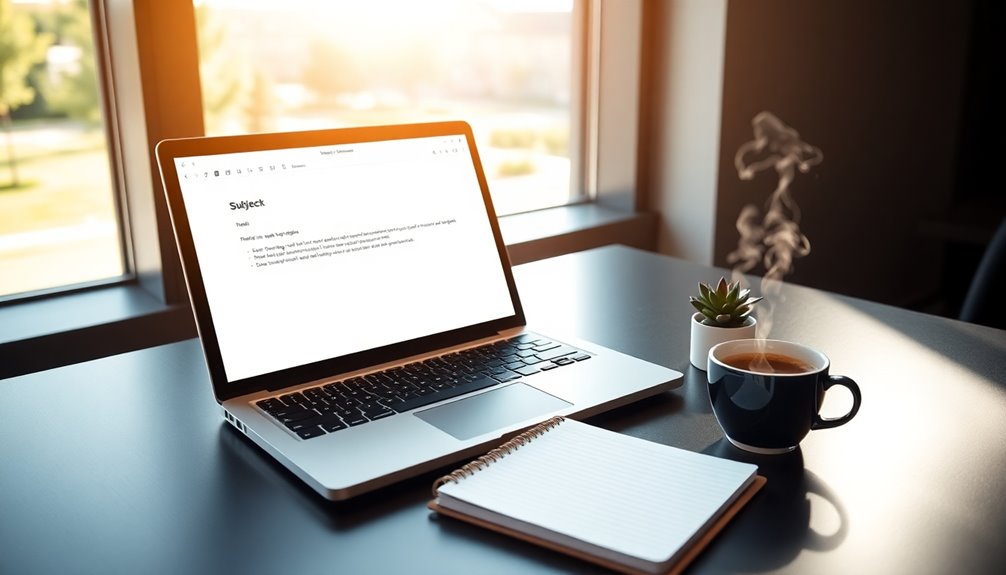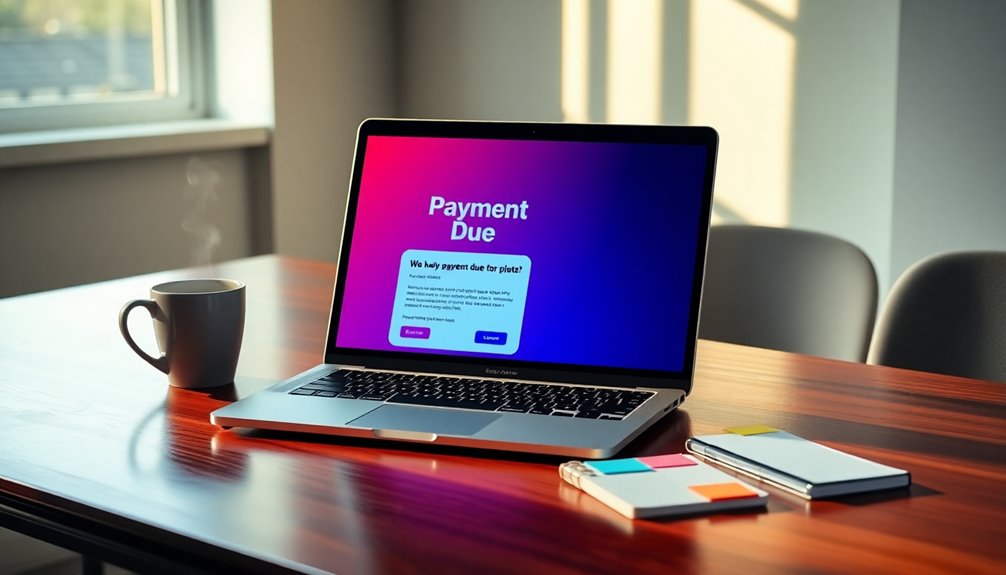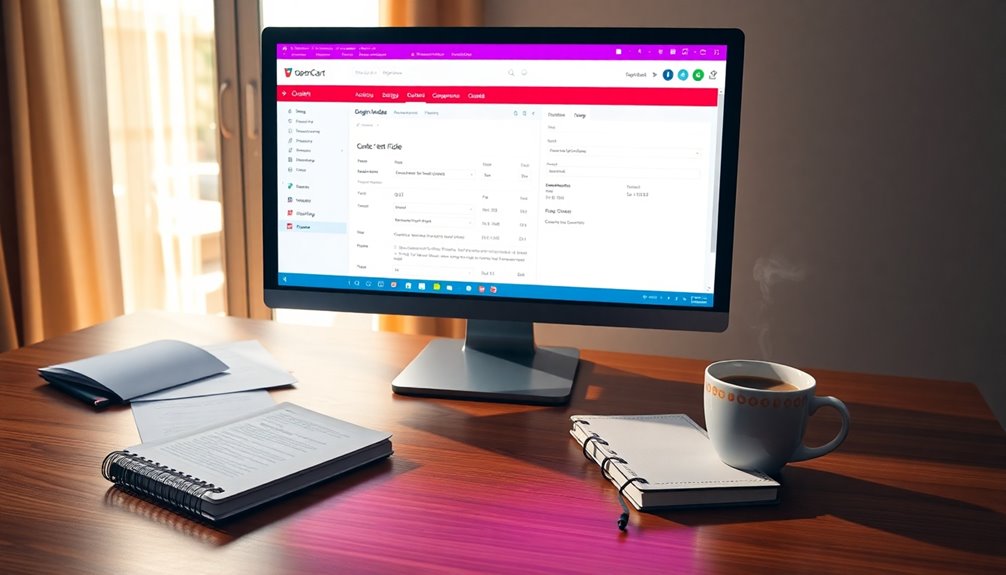To keep parents in the loop about student behavior, use a clear and respectful email template. Start with a concise subject line that hints at the update. In the email, briefly summarize any incidents, focusing on specific details to provide context. Mix in positive feedback to balance the message. Encourage parents to share their insights and invite them to collaborate on strategies for improvement. This approach fosters a strong partnership and helps address issues before they escalate. Stick around to discover pro tips, common mistakes to avoid, and sample templates to enhance your communication!
Key Takeaways
- Use a clear subject line that summarizes the purpose of the email, such as "Behavior Update for [Child’s Name]."
- Start with positive feedback about the student's strengths to create a supportive tone.
- Provide specific details about behavior incidents, including context and any actions taken.
- Invite parents to share their insights or strategies to foster a collaborative approach to behavior management.
- End with a call to action, encouraging parents to discuss any concerns or questions for further support.
Introduction

In today's classroom, keeping parents in the loop about their child's behavior is crucial for fostering a supportive learning environment. When you regularly communicate with parents, you're not just sharing updates; you're creating a collaborative approach to addressing any issues that may arise.
Proactively addressing minor behavior concerns prevents them from escalating, ultimately benefiting students' overall experience.
Utilizing behavior email templates can make this process even smoother. These templates save you time and help ensure that your communication is consistent, straightforward, and effective.
With clear expectations outlined, parents can better understand how to support their children in achieving positive behavior outcomes. This open line of communication reinforces the importance of positive behavior and sets the stage for stronger relationships between parents and the school.
Fosters Strong Parent-Teacher Collaboration

Strong communication between teachers and parents builds a foundation for effective collaboration, crucial for student success. When you regularly share updates about student behavior through email templates, you streamline communication, saving time while keeping parents engaged. This proactive approach allows you to address issues quickly and constructively. Additionally, incorporating educational toys at home can further support your child's learning and development.
Consistent updates about behavior foster a unified strategy, enabling parents to reinforce positive behaviors at home. This partnership not only enhances discipline but also cultivates trust between you and the parents. When parents feel informed and involved, they're more likely to engage in their child's education and support your efforts in the classroom.
Utilizing email templates for behavior notifications encourages timely responses from parents, which facilitates quicker resolutions to any issues that arise. This prompt communication reduces misunderstandings and solidifies a collaborative environment. Additionally, establishing a bedtime routine for babies can help parents create a more structured home environment that supports the learning process.
Ultimately, by keeping parents in the loop about their child's behavior, you create a positive classroom atmosphere where students can thrive. Trust and collaboration between you and parents lead to shared goals, making it easier to address challenges and celebrate successes together.
Embrace this communication strategy to strengthen your relationship with parents and enhance student outcomes.
Clear Subject Line Importance
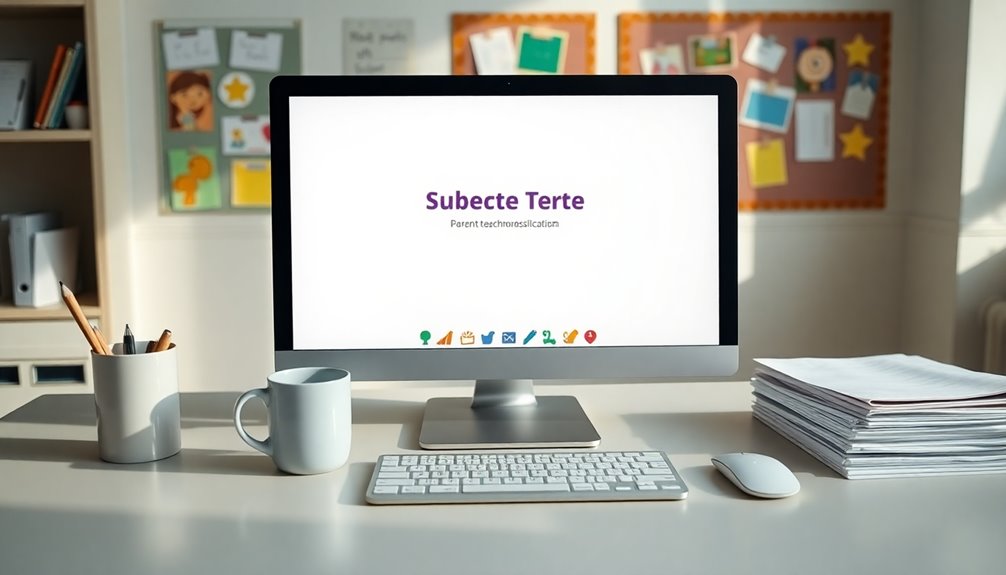
A clear subject line plays a vital role in effective communication with parents, complementing the strong collaboration fostered through regular updates. When you craft an email, using a specific subject line helps parents quickly identify the purpose of your message, ensuring they read it promptly. This clarity is crucial, especially in a world where parents juggle numerous emails daily.
Incorporating keywords like "Behavior Update" or "Important Student Information" conveys urgency and relevance. This practice not only grabs attention but also reduces the likelihood of your email being overlooked. When parents see a clear subject line, they can prepare for the content, allowing for appropriate responses and actions. Additionally, just as visualization techniques enhance focus and performance in other areas, a well-crafted email can help parents visualize their involvement in their child's education.
Research has shown that emails with specific subject lines enjoy higher open rates, which means effective communication becomes more likely. By prioritizing clarity in your subject lines, you set the tone for your message and encourage engagement. Additionally, ensuring compliance with all applicable legal regulations can enhance trust and transparency in your communication with parents.
Crafting Effective Behavior Emails
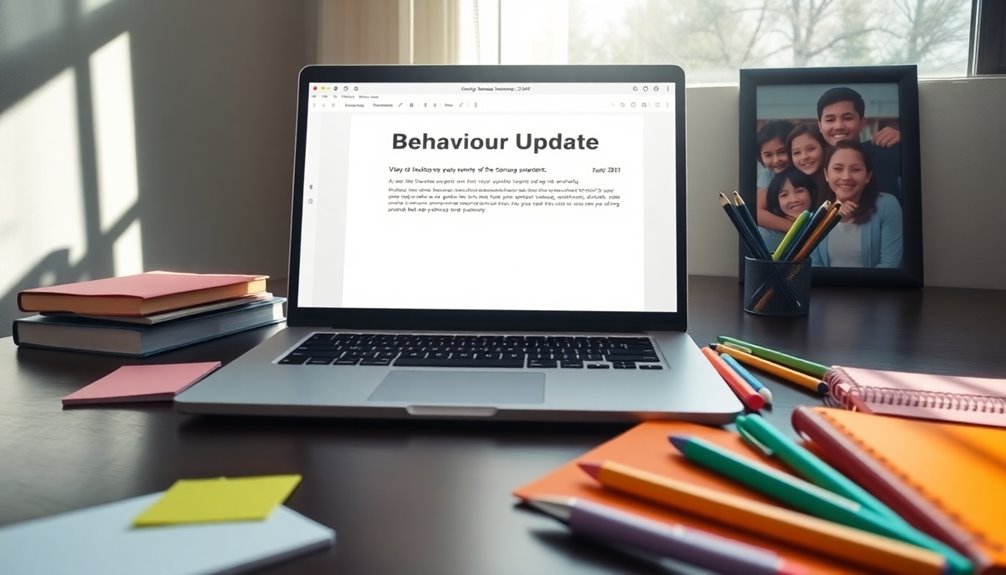
Crafting effective behavior emails is essential for ensuring parents are well-informed about their child's conduct and any necessary interventions. Start with clear communication to prevent misunderstandings. Using email templates for behavior issues can save you time and help maintain consistency in your messaging.
Always include specific details such as dates, incidents, and any prior communications. This provides context and clarity, making it easier for parents to understand the situation. When you reach out, encourage collaboration by inviting parents to discuss strategies for improvement. This fosters a supportive partnership between home and school, allowing everyone to work toward the same goals.
Regularly update your behavior email templates to reflect current classroom policies or behavioral expectations. This ensures your messages remain relevant and effective. Consider applying strategies from active listening to better understand parents' perspectives during discussions.
Remember, the goal is to keep parents engaged and involved in their child's education, enhancing parental involvement. By focusing on these elements, you create a constructive dialogue that benefits both the student and the school community.
Ultimately, effective behavior emails not only address issues but also build a foundation for future collaboration and success.
Pro Tips for Maximizing Impact

To maximize the impact of your behavior emails, consider using precise language and specific examples that resonate with parents. Utilize email templates to streamline your communication, ensuring parents receive timely behavioral updates.
When detailing incidents, provide clarity and context by including specific behaviors that occurred. This not only helps parents understand the situation but also frames it in a way that's constructive.
Encourage collaboration by inviting parents to share their insights or strategies for addressing any behavioral issues. This fosters a supportive parent partnership, making them feel involved in their child's progress.
Maintain a professional tone while expressing empathy in your emails; this balance strengthens relationships and encourages open communication.
Make it a priority to regularly update your email templates to reflect current classroom policies and behavioral expectations. This ensures consistency and relevance in your communications, allowing parents to stay informed and engaged.
With these strategies in place, you'll create a strong foundation for effective communication that promotes a positive learning environment for your students and builds trust with their families.
Common Mistakes to Avoid
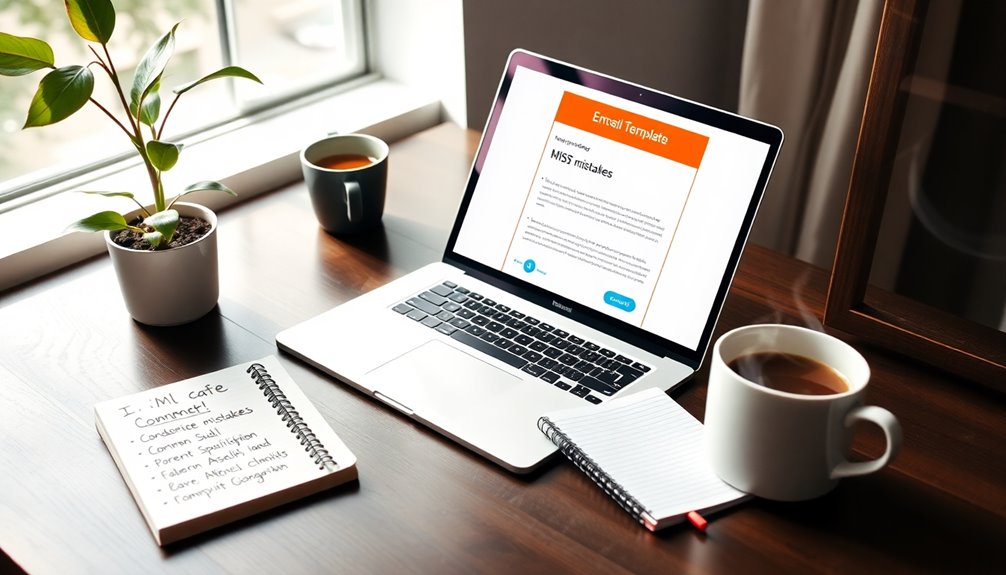
Effective communication is key, but there are common pitfalls that can undermine your efforts when sending behavior emails. First, avoid using vague language. Instead, provide specific details about the incident, such as the date and nature of the behavior, to help parents understand the context. This clarity fosters a collaborative approach to resolving issues. Additionally, consider incorporating insights from best parenting books for discipline, which can provide valuable strategies for addressing behavioral concerns.
Next, steer clear of accusatory statements. Focus on observations and facts, which encourages a constructive dialogue.
Equally important is incorporating positive feedback alongside concerns; doing so creates a balanced perspective that motivates parents to engage in the conversation.
Don't forget to proofread your emails. Grammatical errors or unclear phrasing can lead to misunderstandings and diminish the professionalism of your communication.
A respectful tone is crucial; it helps prevent potential escalation of issues that could arise from written messages. Additionally, consider sharing insights on the child's self-regulation skills to provide context for their behavior and foster understanding among parents.
Behavior Update Email Template
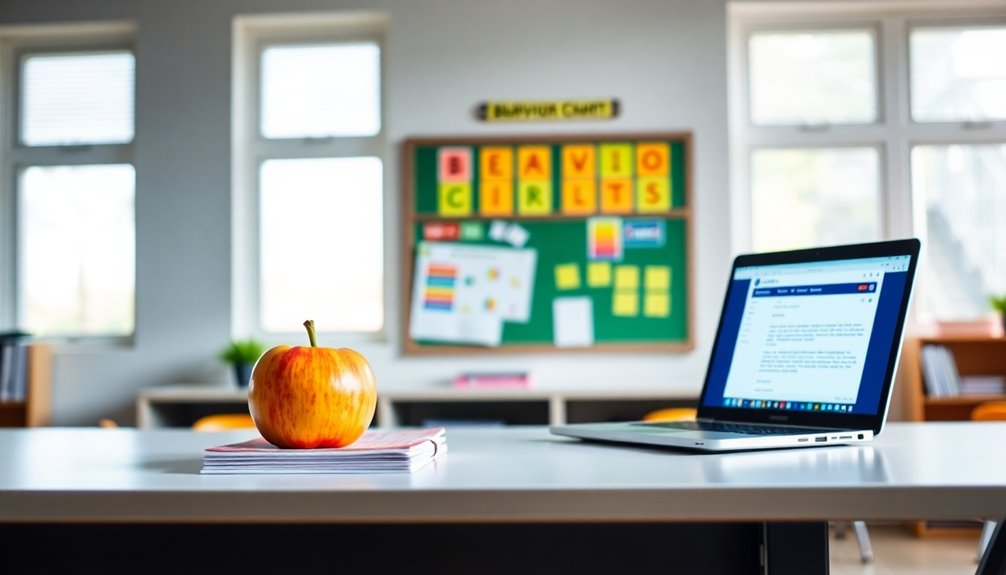
Providing regular behavior updates helps maintain an open line of communication between teachers and parents, ensuring everyone is on the same page regarding a student's progress.
A behavior update email template can streamline this process, allowing you to efficiently share specific behavioral observations and concerns. When using a consistent template, you promote transparency and make it easier for parents to understand their child's performance.
Your email template should include key details like the date of the incident, specific behaviors observed, and potential strategies for improvement. This comprehensive overview keeps parents informed and engaged, helping prevent the escalation of behavioral issues.
Incorporating positive reinforcement into your emails can foster a supportive learning environment and enhance relationships with parents.
Highlighting a student's strengths alongside areas needing improvement encourages collaboration and demonstrates that you value their child's growth.
Final Thoughts
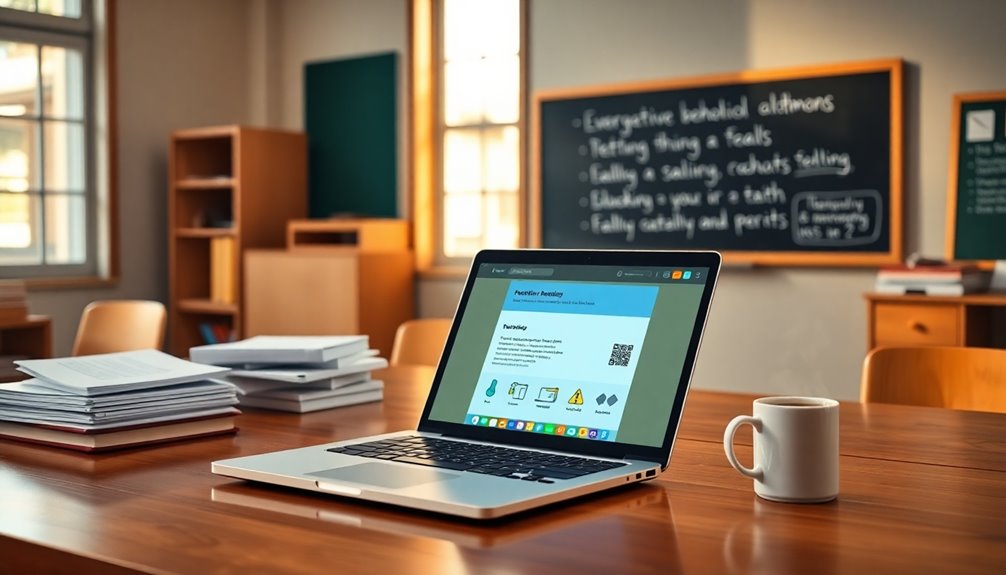
Maintaining open communication about student behavior is essential for fostering a supportive educational environment. By keeping parents informed through behavior notifications, you create a partnership that benefits both students and families.
Using email templates can streamline this communication process, saving you time while ensuring consistent messaging.
Regular updates on student conduct not only prevent escalation but also give parents valuable insights into their child's behavior. This proactive approach opens the door to collaborative discussions, enabling families to work together with you to find solutions that promote student success.
It's crucial to use clear language in your emails, as this enhances understanding and encourages constructive dialogue. When parents comprehend the situation, they're more likely to engage positively and support their child's growth.
Establishing a routine of communication regarding behavior strengthens your relationship with parents, fostering a community that prioritizes student well-being.
Frequently Asked Questions
How Do I Send a Behavior Email to My Parents?
To send a behavior email to parents, start with the observed issue, include context and date, maintain a respectful tone, invite their input, and suggest actionable steps for collaboration to support your child's improvement.
How Can Teachers Keep Parents Informed?
You can keep parents informed by regularly sharing updates about their child's progress, both positive and negative. Use clear communication, including emails or newsletters, to foster collaboration and ensure everyone supports the student's development effectively.
How to Respond to Teacher Email About Child Behavior From Parent?
When responding to a teacher's email about your child's behavior, acknowledge their concerns, ask for specific examples, share relevant insights, and inquire about strategies. This approach fosters collaboration and helps address the issue effectively.
How Do I End an Email to a Parent About Their Child's Behavior?
To end your email about their child's behavior, express optimism for collaboration, invite their input, suggest ways to encourage positive behavior at home, and offer your availability for further discussion. Sign off professionally.
Natali – Editor in Chief (Strategy and Mastery, AI Expert) Natali, our Editor in Chief, is the driving force behind our content’s strategic direction. With a keen eye for detail and a deep understanding of market trends, Natali ensures that our content is top-notch and strategically aligned with our client’s goals. Her expertise in AI helps to seamlessly integrate advanced technology into our marketing strategies, pushing the boundaries of conventional marketing.

